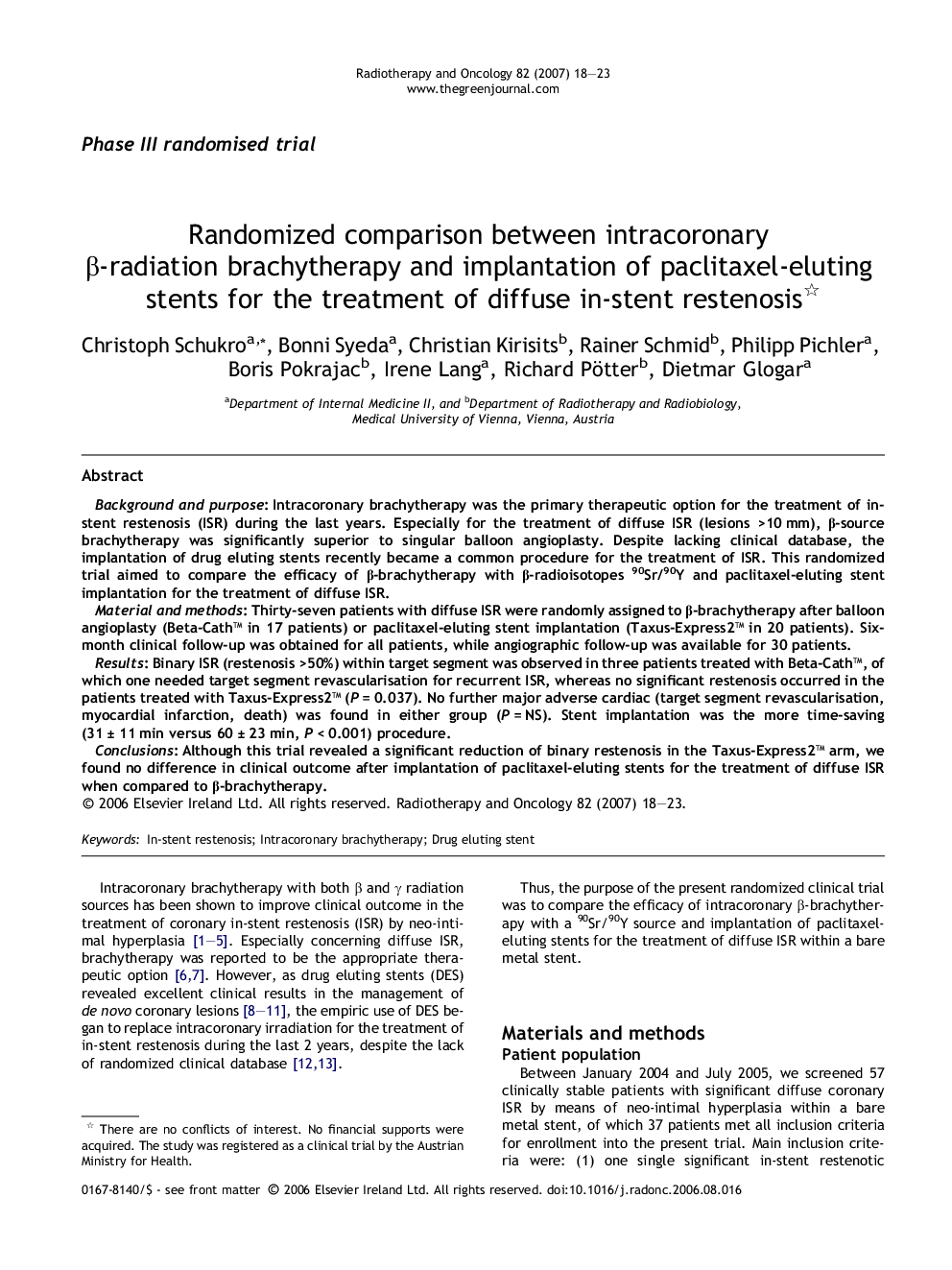| Article ID | Journal | Published Year | Pages | File Type |
|---|---|---|---|---|
| 2161109 | Radiotherapy and Oncology | 2007 | 6 Pages |
Background and purposeIntracoronary brachytherapy was the primary therapeutic option for the treatment of in-stent restenosis (ISR) during the last years. Especially for the treatment of diffuse ISR (lesions >10 mm), β-source brachytherapy was significantly superior to singular balloon angioplasty. Despite lacking clinical database, the implantation of drug eluting stents recently became a common procedure for the treatment of ISR. This randomized trial aimed to compare the efficacy of β-brachytherapy with β-radioisotopes 90Sr/90Y and paclitaxel-eluting stent implantation for the treatment of diffuse ISR.Material and methodsThirty-seven patients with diffuse ISR were randomly assigned to β-brachytherapy after balloon angioplasty (Beta-Cath™ in 17 patients) or paclitaxel-eluting stent implantation (Taxus-Express2™ in 20 patients). Six-month clinical follow-up was obtained for all patients, while angiographic follow-up was available for 30 patients.ResultsBinary ISR (restenosis >50%) within target segment was observed in three patients treated with Beta-Cath™, of which one needed target segment revascularisation for recurrent ISR, whereas no significant restenosis occurred in the patients treated with Taxus-Express2™ (P = 0.037). No further major adverse cardiac (target segment revascularisation, myocardial infarction, death) was found in either group (P = NS). Stent implantation was the more time-saving (31 ± 11 min versus 60 ± 23 min, P < 0.001) procedure.ConclusionsAlthough this trial revealed a significant reduction of binary restenosis in the Taxus-Express2™ arm, we found no difference in clinical outcome after implantation of paclitaxel-eluting stents for the treatment of diffuse ISR when compared to β-brachytherapy.
